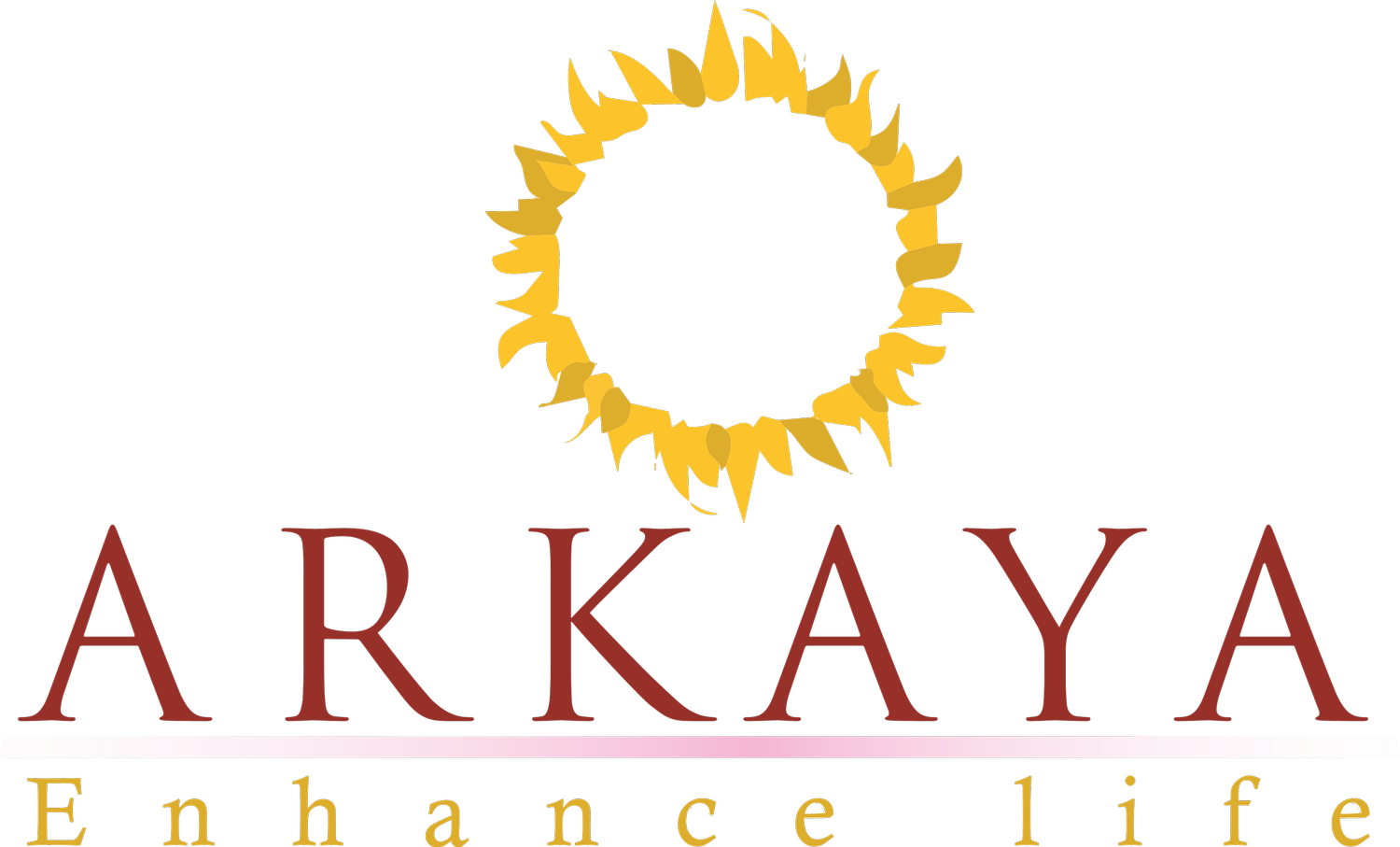CLICK HERE TO JOIN ONLINE ARKAYA COMMUNITY CLASS VIA ZOOM
Every Saturday from 11am – 1 pm
In the last session, we saw how the willingness and capacity of a person to move beyond conditioning is directed by the degree of the inner obstacles one is dealing with. Patanjali (in The Yoga Sutras) lists nine of them. If one can see them and work with them, rather than running away or trying to fight them, life becomes much easier. There are four conditions that go along with these obstacles as well. Patanjali also lists means to overcome these obstacles and conditions which we will see more of in Part 3.
Four Conditions That Go Along With The 9 Obstacles
In chapter 1, verse 31 Patanjali lists these four conditions:
1.Dhukha - Dhu = unpleasant, bad, sad Kha = space.
Dhukha means pain or suffering. For those who are acquainted with the Arkaya classes we are familiar with the word sukha to remind ourselves of the attitude towards asana. While sukha means creating a space of ease, grace and pleasantness, dhukha is the opposite.
2. Daurmanasya - Daurmanasya literally translates to a bad or un-purified mind. So a mind that is filled with despair, anguish, frustration, hatred, negativity or animosity.
3. Angamejayathva - Angam or anga we have seen means “limbs” as with ashtanga yoga (the eight limbs of yoga). Shaking, tremor, trembling, hyperactivity of limbs. This can impact the organs as well.
4. Shvasa Prashvasa
Shvasa - in breath
Prashvasa - out breath. So this translates as irregular or abnormal in and out breathing
These Vikshepa or distractions are also called chitha vikshepas or what the mind churns up to keep us from being focused and in tune with the Self. From deep within the chitha, or the unconscious, throws up old attachments, compulsions, entanglements, revulsions, that keep us distracted. These vikshepa or distractions are the sahabhuva or companions or accompaniments to the nine antaraya, or inner obstacles, we saw in the last blog.
Working Backwards
We can already see that if we work backwards we can harmonise some of the distractions with applying the tools and principles we have learnt. Just through regular pranayama we can regulate the shvasa prashvasa. When there is more energy/prana flowing through the body and nervous system then the trembling and restlessness of the limbs will be addressed. Pranayama can also be used as a detergent, or soap, to clean up the mind. And if the mind is purified and can see more clearly, there are less fantasies that causes dhukha, or pain, and more respect for self to create sukham, or ease.
The Consciousness Of An Action
Constant Karuna Sakshi Bhava (compassionate self witnessing) and practice to purify will help us move through these internal obstacles and distractions better. When we act from a place of clear seeing, the act can be the same but the consciousness varies. For example, in Yoga there are three main aspects of consciousness:
Thamas = Ignorance, inertia, darkness, dullness
Rajas = Passion, agitation, restlessness, arrogance, divisive energy, busyness, competitiveness, combativeness
Sathva = Still, alert, aware, dynamic stillness, being and doing from being
Once one stabilises strongly in sathva, there is a state mentioned which is above the three gunas or qualities as well. However we can focus on cultivating sathva for now, as it offers the space for clear seeing. This concept is much misunderstood, where rajas is touted as the pinnacle in modern success stories as there is visible and dramatic valour. Or sathva is mistaken for laziness and escapism. Sattva is slowing down to see what needs to be addressed and then doing our dharma.
Dharma = what creates harmony and order
As we understand this, any act can spring from any of these levels of consciousness or permutations and combinations of them. For example a naked man can be thamasic in which case he is a mad man with no clothes. He can be rajasic where he is showing off his body, sexualizing it or even an exhibitionist. He can be sattvic, where he is a digambari. The word digambari is a Sanskrit word used to describe a saint who has released all shame stored in the body and is immersed in the divine. Digambari literally means, “one who is clothed by the sky.” It is a beautiful and poetic way of describing someone who is not attached to the body.
One of my parama gurus, Kambali Swami, was a digambari. When the French were in Pondicherry, his devotees put a kambali or a blanket over him as the French did not have a reference point for a naked saint in meditation. The local people feared the French would arrest him for being naked, so used the blanket to cover him. Kambali Swami barely ate and let go of his worldly possessions, even his name. The swami sitting in meditation at a particular spot in the temple came to be called kambali swami or the blanket swami as he spoke little, ate little and cared little about any possessions. His meditative vibration, aloneness to connect to wholeness, permeated the Kambali Swami Madum. Madum is a sacred place.
So as we refine our minds on the path, things that seemed important may lose their hold over us if they are just mental constructs passed on to keep us trapped.

